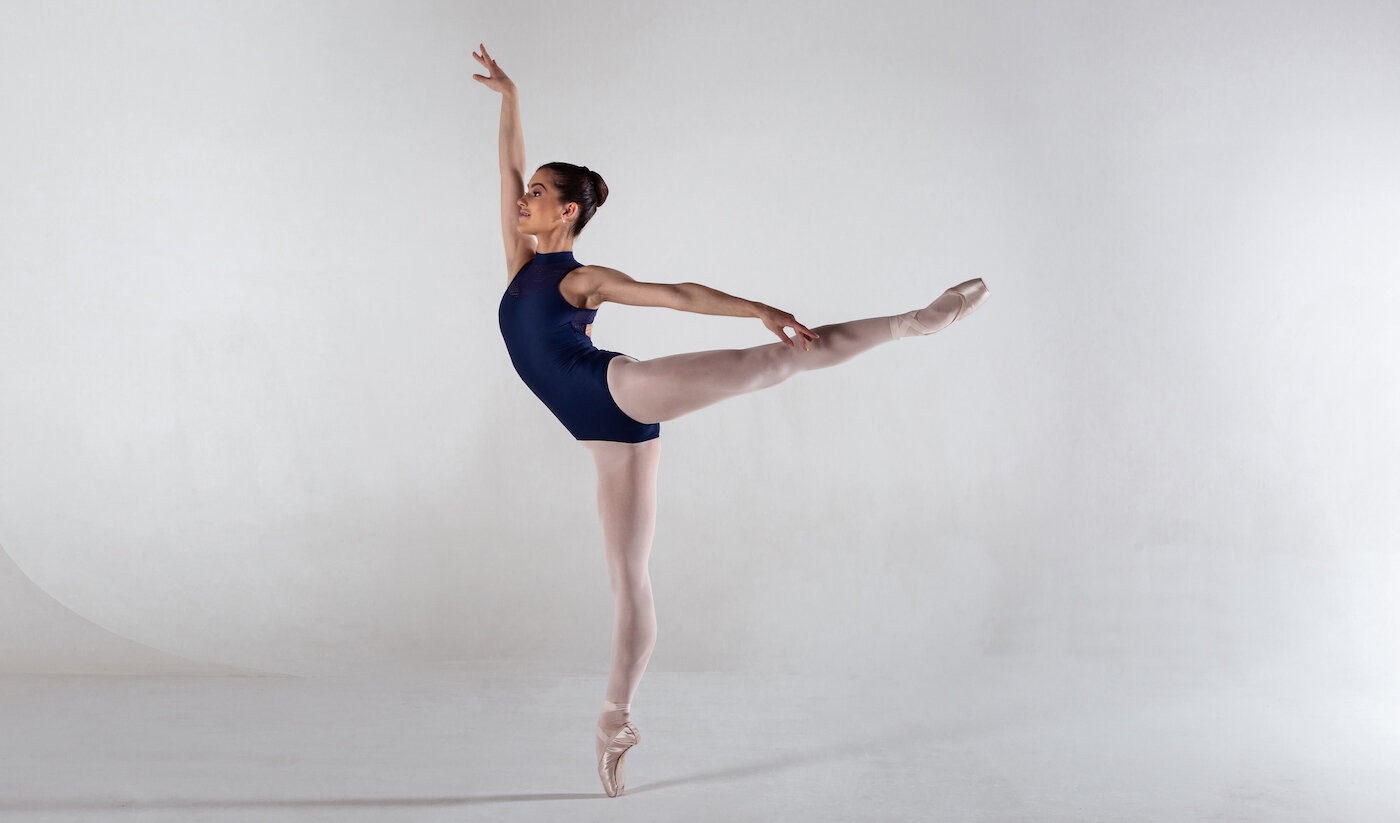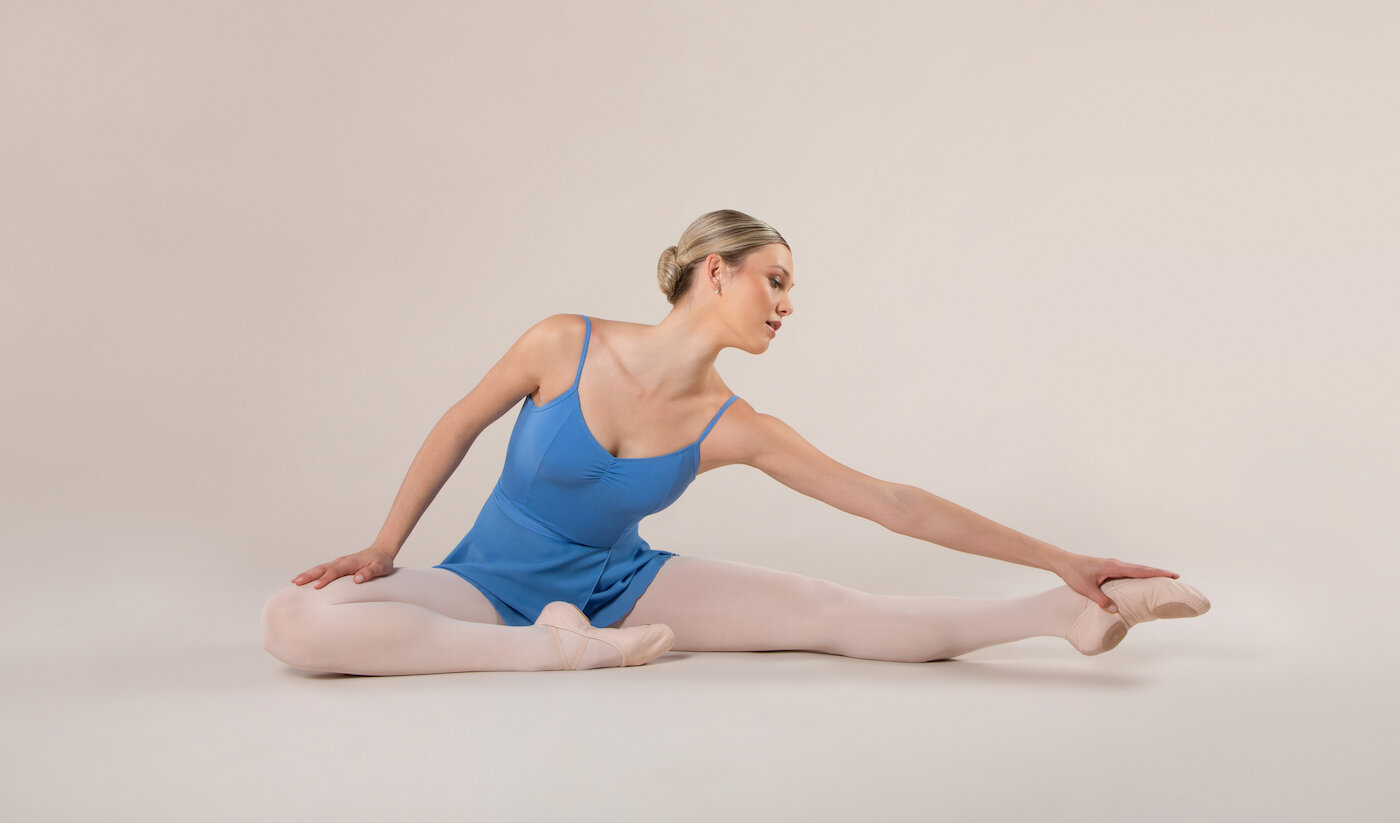Dance 101: Perfecting your Arabesque
A display of both strength and flexibility, the arabesque is a signature position in dance. Regardless of whether you’re a professional or just starting, an arabesque is something everyone strives to perfect. The graceful lines, the height of the leg, the ease of execution. It all seems so effortless and ethereal. But in order to attain such a pleasing aesthetic, some practice and hard work is required. Below we’ve listed some tips to incorporate into your practice to ensure your arabesque gets as close to perfection as possible!
Warm Up & Stretch
Warming up is essential, no matter what you’re about to do. Start with simple rolling down the spine, and leg swings to get the blood flowing throughout the body before progressing to other exercises. Jogging on the spot or around the room is another way to increase the heart rate and systemic blood flow. Stretching will also assist with improving your arabesque as flexibility will determine the height of your arabesque. Focus on stretching the hips and back, particularly the hip flexors and the hip extensors (hamstrings) to lift the leg, and the back extensors to keep the torso upright. Don’t forget about strengthening these areas as well to maintain the shape! Our blog piece on ‘Six Exercises to Support & Strengthen your Back’ provides some easy to do exercises that will further assist with perfecting the line of your arabesque!
Zoe Cavedon wears the Ophelia Leotard and Melody Skirt in Cornflower.
Engage the Glutes
Your glutes or ‘gluteal muscles’ are a group of three muscles that make up the buttocks: the gluteus maximus, gluteus medius and gluteus minimus. The gluteus maximus in particular is one of the strongest muscles in the body and is responsible for movement of both the hip and the thigh. The glutes are critical to your arabesque shape as they assist with maintaining turnout and provide support to both the working and supporting leg. When performing an arabesque, even before the working leg has been lifted off the ground, you need to engage your glutes. To remind yourself of how much they need to be involved, tendu derriere and engage (or squeeze) the glutes and feel the sensation down the back of the hamstring. This is how much you need to activate your glutes in order to maintain turnout and assist that supporting leg whilst performing an arabesque.
Laura Griffiths practicing backstage during the 2019 Lucie Saranova Awards.
Keep your Hips Square
It’s easy to fall into the habit of twisting or opening your hips, especially to get our leg higher, but a true arabesque maintains correct alignment. Bone structure will determine how much flexibility and range of motion we have in our hips (particularly in the hip flexors), therefore the ability to maintain alignment will be easier for some compared to others. But that doesn’t mean we all can’t focus on our alignment! To prevent our hips from opening, aim to improve the flexibility of the hip flexors by stretching them daily. An easy stretch to do is a ‘kneeling hip flexor stretch’ (listed below). Also try to maintain the turnout of your supporting leg to prevent your hips from twisting and opening too much when your working leg is in arabesque. It’s nearly impossible to not open your hips slightly when doing an arabesque. By focusing on stabilising and rotating the supporting leg and improving the flexibility of the hip flexors, the line and alignment of your arabesque will improve.
Kneeling Hip Flexor Stretch
1. Kneel on one knee and place the other foot flat on the ground in front of you with your knee bent in line with the ankle (making a 90 degree shape).
2. Lean forward, stretching the hip of the knee on the ground toward the floor, maintaining the 90 degree shape between the knee and the ankle.
3. Hold for 20 seconds and then repeat on the other side.
Squeezing your glutes will allow you to enhance the stretch in the hip flexor even further.
Bianca Scudamore wears the Jesse Long Sleeve Leotard and the Darcey Half Tutu in White.
Turnout
Turnout comes from the hip and is supported by six deep rotator muscles, the three gluteal muscles and the three hip flexor muscles. Most dancers aren’t naturally born with turnout and rely on a consistent stretching routine to improve and maintain their rotation and flexibility. Arabesques are generally executed with turned-out lines, starting from the hip running down the leg to the toe. You’ll rarely find an arabesque that is choreographed turned-in (unless it’s a stylistic choice). To ensure both your working and supporting legs are turned-out, a visual you can work with is imagining your legs are like those spinning barber poles (the red, blue and white ones). As you pull up taller, your outer thighs wrap around as your inner thighs pull froward in a continuous stream. Even as your working leg lifts behind you, they continue to wrap and pull, creating a beautifully turned out arabesque line. For further advice on how to improve turnout you can also read our blog post ‘Turning out better’ and follow some of the great exercises designed to improve your natural turnout!
Paige Ristevski wears the Maya Mesh Leotard in Black from the Mesh Collection.
Opposing Forces
When lifting your leg in arabesque you’ll naturally push your upper body forward. But you don’t want your body to lean too far forward. To prevent your chest sinking down, think about lifting upwards instead of forwards. This will improve the line of the arabesque by enhancing the curve in your back. When thinking of lifting your upper body up, also think of pushing down with your supporting leg at the same time - like you’re being pulled in two directions, up and down. This will provide more support to the standing leg and improve your balance, while also enhancing the overall aesthetic of the position. A similar thought process is required for the working leg and your arms. Imagine your working leg being pulled behind you and your arm in devant being pulled in front of you. By utilising these opposing forces you’ll be able to improve and refine your arabesque through minimal movement.
Energetiks Model Search Runner Up Tom Umseher wears the Joshua Tee in Black and the Oakley Legging in Diesel.
Use your Arms
When we think of an arabesque we tend to only think about the legs and forget about the arms. But the arms are just as much apart of the shape as the legs are. Depending on where the arms are placed, the variation of the arabesque changes. As a general rule for the arms (regardless of what position they are in), ensure you’re reaching out through your fingertips. Keep the shoulders down and support the arms by thinking of lifting from the underside instead of the top. Imagine a soft, graceful line, but not limp. There needs to be energy as the arms assist with stability and balance. Finally keep the arms at (minimum) shoulder height. The gaze of the eye should follow the line of the arm so if the arm is too low, the eye gaze will drop and the line will be ‘broken’.
Energetiks Ambassador Alexandra McMaster wears the Jesse Long Sleeve Leotard and the Darcey Half Tutu in White.
Perfecting your arabesque takes hard work, determination and practise. But that doesn’t mean it’s not achievable! As with all aspects of dance, practise makes perfect. We are all continuously learning, improving and growing as artists and performers. What we once weren’t able to achieve, we can now do with ease. Enjoy the process of improving and perfecting your arabesque and before you realise it your back leg will be higher (and squarer) than before and your arms (and gaze) will be reaching for the stars!
Article by Sheree Ronai-Horvath
Photography by Elly Ford











